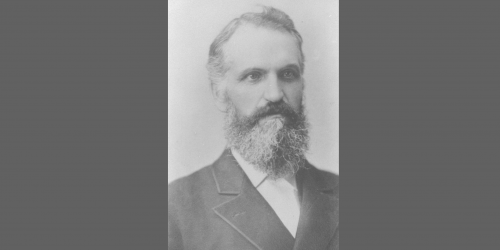
Retrato de A.G. Daniels | Courtesy of Centro de Pesquisas
Such were the final words of Paul in his second letter to the Corinthians, a statement that flashes to all Bible readers the identity of the members of the Godhead — the Father, the Son and the Holy Spirit.
Between the 1880s and the mid-twentieth century, Adventism went through a revolution on the Trinity and the Divine natures and personhood of the Son and the Spirit. Ellen White, as noted, pointed Adventism in the new direction. But her statements did not create the revolution. Rather, they encouraged other Adventists to explore the Bible for themselves on those topics.
But even then change did not come quickly. In fact, it would take decades. A case in point is the 1919 General Conference-sponsored Bible Conference, which had an open discussion of the Trinity that made some nervous. One leading minister declared: “I have not been able to accept the so-called Trinitarian doctrine. . . . I cannot believe the so-called Trinitarian doctrine. . . . I cannot believe that two persons of the Godhead are equal, the Father and the Son. . . . I cannot believe the so-called Trinitarian doctrine of the three persons always existing.”
General Conference president A.G. Daniels sought to calm things down by indicating that “we are not going to take a vote on trinitarianism or arianism.” He also claimed that he had had the scales knocked from his eyes by the publication of The Desire of Ages and had turned to the Bible on the topic.
The year 1931 saw the denomination’s first statement of fundamental beliefs take a Trinitarian position. That doesn’t mean that all were agreed. Pockets of anti-Trinitarianism remained up into the 1940s but, by the 1950s, the church was of one voice on the Trinity.
For that reason, it has been somewhat surprising to see a revival in anti-Trinitariansim. Some of the apostles of that doctrine caught me in a “dark alley” at the Toronto General Conference session in 2000. I asked them why they believed their position was truth. Because, they responded, it was the position of our founders. Such logic would lead us to eating pork and keeping the Sabbath from 6:00 p.m. to 6:00 p.m. Tradition, I responded, is a good position for a medieval church, but not for a Bible-based movement. That was settled back in the 1840s and reiterated in the 1888 era.
The only tradition that counts is that Adventism is a people of the BOOK.
___________________________________
George R. Knight is a retired professor of Church History at the Adventist Theological Seminary at Andrews University. This article is from his book, Lest We Forget, a daily devotional, published by the Review and Herald Publishing Association, page 293.